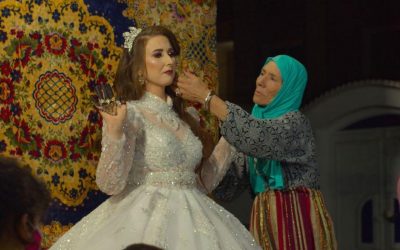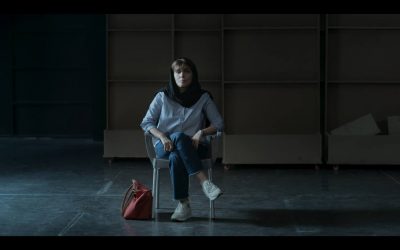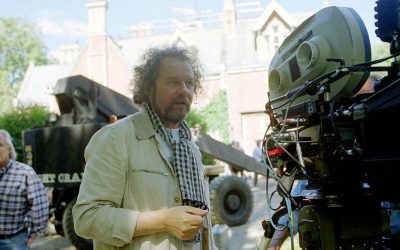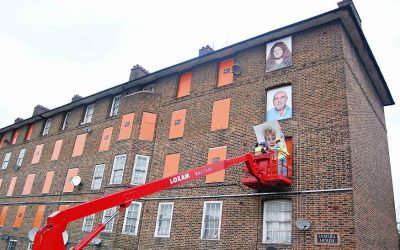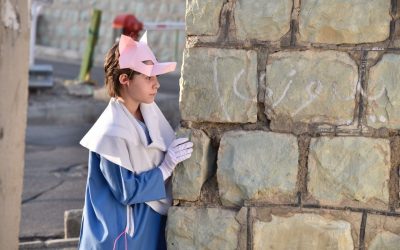Asma Ebrahimizadeh
Born in 1986, she holds a bachelor’s degree in Theater Direction. She served as the first assistant director and production planner for the feature film Fish and Cat (The Fish and the Cat) in 2013, as well as the first assistant director and production planner for the feature film Hojoum (The Attack) in 2017. She worked as a production planner for the feature film Toman in 2018.
As a writer and director, she created the short film common hole (Shared Hole) in 2016, which won awards for Best Film, Best Cinematography, and Best Adapted Screenplay at the 33rd Tehran Short Film Festival. It also received the Best Film from the Audience Award at the same festival and won Best Film and Best Cinematography at the 54th Regional Festival. Additionally, she was awarded Best Direction at the Wave Festival and placed third in the Books and Cinema section at the 33rd Tehran Short Film Festival. She was nominated for Best Film, Best Direction, Best Sound Editing, and Best Cinematography at the 7th House of Cinema Awards (ISFA), where she won Best Adapted Screenplay.
In 2021, she wrote and directed the short film Zone (Region), which was nominated for Best Direction and Best Screenplay at the 38th Tehran Short Film Festival, and received nominations for Best Sound Editing, Acting, and Editing at the 12th ISFA Academy Awards.
RedCut: Please start by explaining how you entered the world of cinema and what led you to choose the mediums of film directing and screenwriting in a context where artistic work and filmmaking are complex and challenging for women.
Asma: My interest in cinema dates back to my childhood. From the very beginning, cinema had a significant impact on me, partly due to the rituals of going to the cinema—the darkness of the theater, watching a story unfold on a large screen, and the silence of all the spectators as they followed the narrative. My father was a cinema enthusiast, and going to the movies was a family habit. For example, I remember watching films like “Leila” by Dariush Mehrjui and the “The Blue Scarf” by Rakhshan Banietemad alongside other films appropriate for my age at that time. Schools also incorporated cinema outings into their programs, which added another layer of enjoyment.
During my childhood and adolescence, I watched artistic films that were different from other emerging trends, broadcast on the fourth channel. These experiences significantly influenced me. Television was everything in the absence of the internet and social media. I studied Theater Direction at university and soon made my way into cinema. My passion for creating and sharing what was on my mind was so strong that the difficulties of the journey didn’t seem daunting. In fact, the challenges of the path were worth the pleasure of seeing the finished film on the big silver screen.
RedCut: In the film Zone (Region), we encounter a situation where the protagonist’s wandering and their complex relationship between performing in front of the camera and their emotional relationship are central. How did this idea come to you?

Asma Ebrahimzadegan
Asma: The idea for Zone revolves around the themes of absence, non-existence, and loss, and how one copes with this absence. It’s as if there is an original presence, and in its absence, a substitute continues along the path. I was searching for a story that would fit this idea, and during the writing process, I reached the point of involving acting and scenes that had the most potential for my concept. In fact, cinema (in its constructed nature) and the role taken on and performed by the actor were precisely what I wanted. It’s about an actor playing the role of a deceased actor—a role within a role. An unfinished circle. The role itself, which is not inherently real, represents a narrative that might not even be true. I explore this idea in different ways in my stories and previous films as well.
RedCut: Doesn’t the beginning of this contradiction and conflict between who we are and who we are expected to stem from a patriarchal society that always desires its own constructed woman? In your film, the female character struggles to take agency over her role, but the contradiction with what is expected of her creates a complex dilemma. What are your thoughts on this?
Asma: Initially, regardless of the issue of gender, I was more focused on the loneliness of the actor in front of the camera. The situation in which everyone pretends to have been close to the deceased actor (Sima) and feels sad about her absence raises questions about how true this is. The character Ali points to this issue when he says, “No one wants to go back to the past.” On another layer, we see how Sonia tries to shape the role for herself while adhering to conventional teachings about being good. The issue of not smoking and Sonia mentioning that she thought if she said she smoked, she wouldn’t be chosen, highlights her lack of agency. Sonia has no choice but to be like Sima; she has no real option to choose. Being behind the scenes in cinema helped me draw from my personal experiences to process Sonia’s character and the challenges she faces on set.
RedCut: How much freedom did the actor in your film have to utilize spontaneous moments and changes in the script’s direction? An actor who is meant to experience their own being in contrast to what is not. Throughout this process, how much did the actor reflect the being of the filmmaker and the writer?
Asma: That’s an interesting question. I, as the filmmaker and writer, along with Bahareh Razani, who plays the director, and Sonia, who plays a character named Sahar in Bahareh’s film, effectively swapped roles and put words we wanted to express into each other’s mouths. For example, the film-within-a-film, which seems to be a scene from the life of Sima and Ali, maintains that same quality of relationship. It’s a construct that I, as the director of the film-within-a-film, ask Bahareh Razani to create for the progression of the story on another layer. Everything was pre-written. The idea and the method we were employing did not allow for complete freedom of action, but not to the extent that we disregarded the feel of the moment, the atmosphere of the environment, and what the moment demanded.
One of the challenges for Sonia and me was the scenes in the film-within-a-film that were supposed to be poorly acted; Sonia was meant to be a bad actor there. It’s inherently difficult—how can one play a bad actor while actually being a good one? It shouldn’t come off as if you’re trying to act badly; you have to genuinely perform poorly. To build Sonia’s character, who lacks confidence, we drew from our memories of times when we might not have been good at something. Ultimately, Nina from The Seagull helped me the most. Nina and her golden monologue about hands and how alienated she feels from them while on stage—how she is so confident on stage that she becomes a stranger to her own body.
RedCut: Iranian women’s cinema has always been complex and crisis-ridden under the pressure of systemic power and patriarchy. How much has the landscape changed for new generations, and do you see the emergence of more female filmmakers as a form of resistance and struggle from women, or have there been fundamental changes in the environment coming from male filmmakers as well? As a filmmaker, what points do you consider important when discussing the status of young female filmmakers?
Asma: This systematic pressure has always existed and will continue to do so, and there is no hope for sudden change. In fact, there have always been “seven trials of Rustam” to assess the quality of women’s work in any part of cinema; on the other side of the fence, there is the rule of men. You just have to sit in your chair and say, “I am a filmmaker.” There’s no need to prove it. Capital and resources come to them automatically. Hope has actually formed elsewhere. Women filmmakers have opened up a new path against existing systems. We are witnessing more personal and introspective films from them, with fresh perspectives that cinema needs for its survival. Festivals and distributors are investing in these films, and whether this is genuine or just riding the wave is not as important. What matters is that an opportunity is created for talents who have always had half the chance of male filmmakers.
RedCut: Are you currently working on a new project? If you are writing or making a new film, could you explain a bit about it?
Asma: At the moment, I am writing the synopsis for a screenplay that is related to my two previous short films. However, these days, the most crucial issue for any filmmaker is the concern of how to create. Given the current circumstances and the prevailing oppression, it is important to consider how to make a film that resembles what we are truly thinking about, rather than what we are forced to think about.


